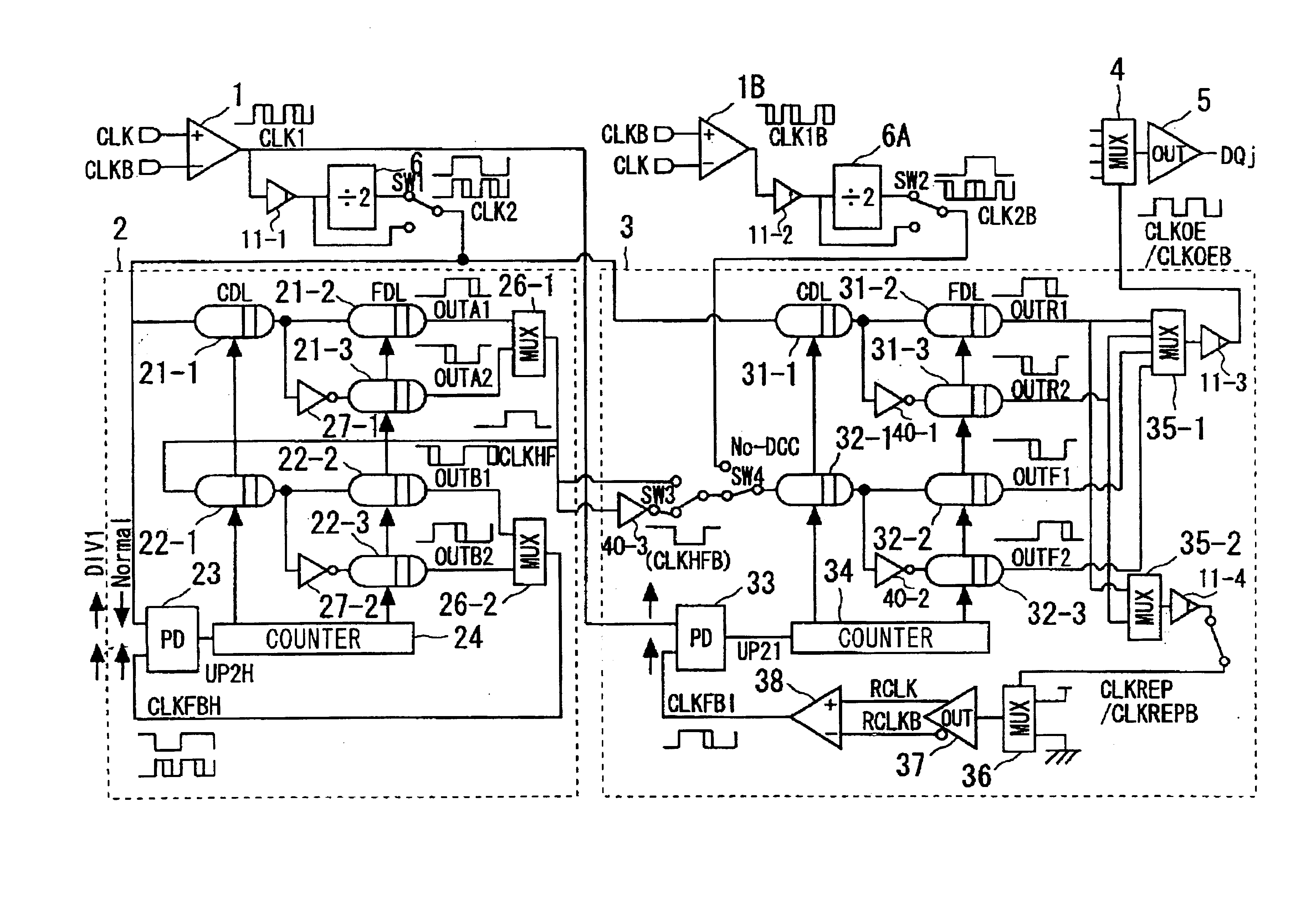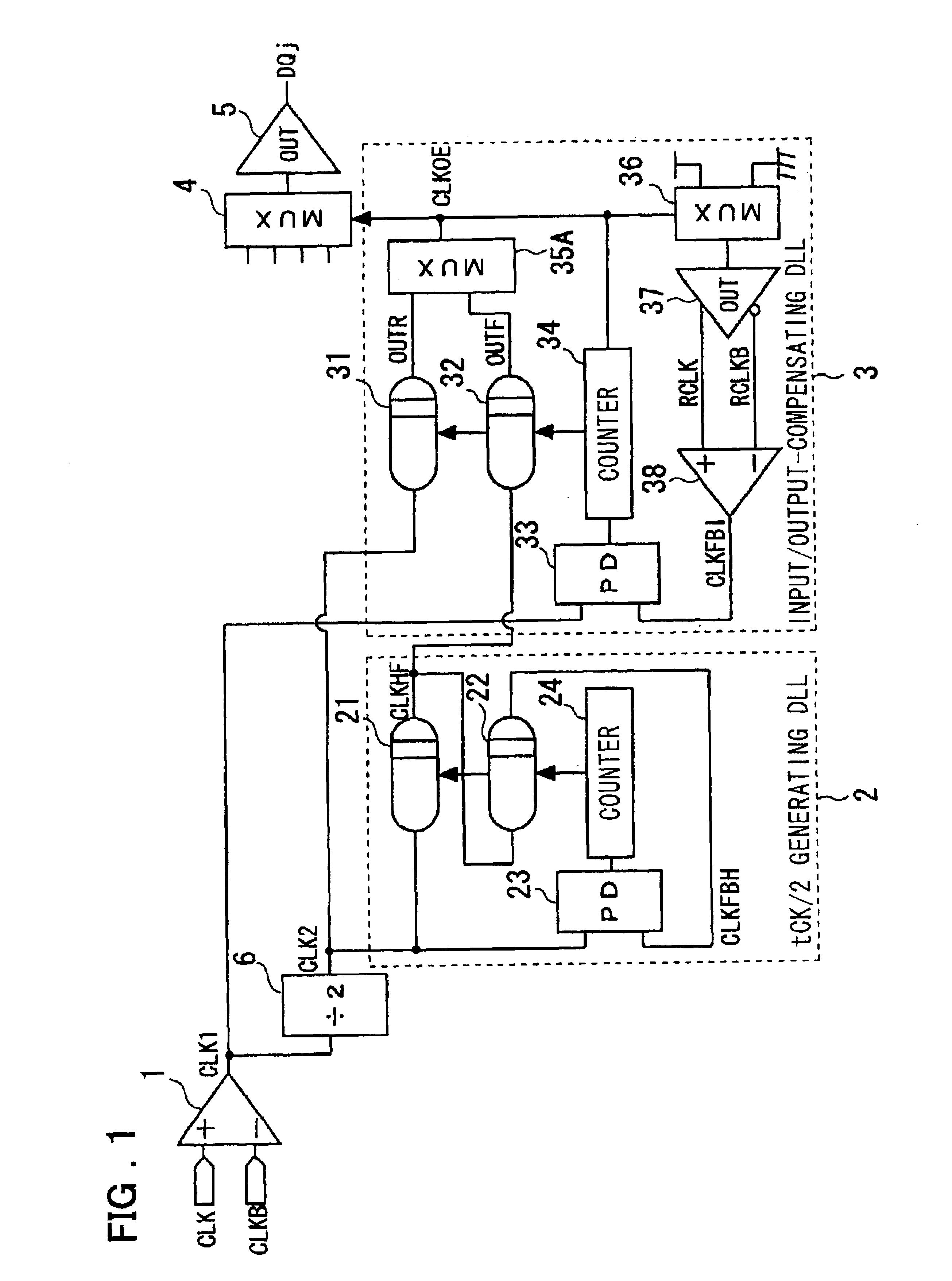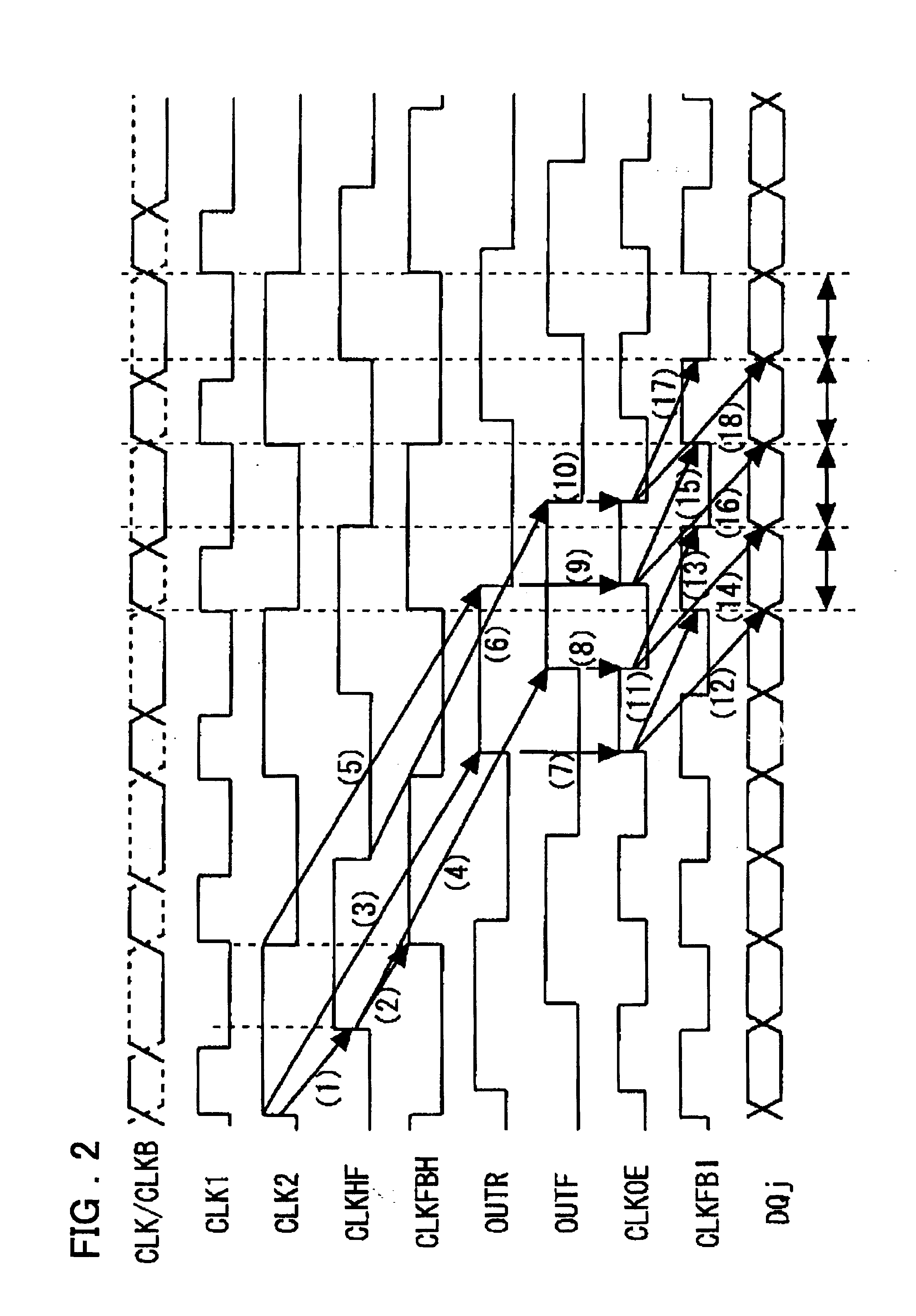Semiconductor integrated circuit device and delay-locked loop device
a technology of integrated circuit and delaylock, which is applied in the direction of pulse automatic control, static storage, instruments, etc., can solve the problems of increased power consumption, hazard or abnormal pulses, and difficulty in maintaining high timing precision, so as to prevent deviation in output timing and reduce power consumption
- Summary
- Abstract
- Description
- Claims
- Application Information
AI Technical Summary
Benefits of technology
Problems solved by technology
Method used
Image
Examples
first embodiment
In the present invention, as shown in FIG. 1, a delay-locked loop (2) for a DCC function is so adapted that the delay times of serially connected first and second delay lines (21, 22) are adjusted in such a manner that a signal obtained by delaying an input signal by the first and second delay lines (21, 22) will be in phase with the input signal, as a result of which the first delay line (21) outputs a signal obtained by delaying the input signal by one half cycle of the input signal. The delay-locked loop (2) is provided with a frequency dividing circuit (6) for performing frequency-division of the input signal, and includes first delay adjusting means (23, 24) for delaying the output signal from the frequency dividing circuit (6) by the first and second delay lines (21, 22) and adjusting the delay times of the first and second delay lines (21, 22) in such a manner that the output signal of the frequency dividing circuit (6) and the output signal of the second delay line (22) will...
second embodiment
the present invention will now be described with reference to FIG. 3, which illustrates the structure of the second embodiment.
According to this embodiment, as shown in FIG. 3, the clock obtained by halving the frequency of the input clock signal CLK1 by the frequency dividing circuit 6 or the clock signal CLK1 (undivided) can be employed in the tCK / 2 generating DLL 2 by switching between these clocks using a switch SW1. Similarly, the clock signal obtained by halving the frequency of an input clock CLK1B (the complementary signal of the clock CLK1) by a frequency dividing circuit 6A or the clock signal CLK1B (undivided) can be employed in the input / output-compensated DLL 3 by switching between these clocks using a switch SW2. Further, a switch SW4 makes it possible to select a connection in such a manner that the duty correction (DCC) function is not introduced. Aspects of the second embodiment that differ from those of first embodiment shown in FIG. 1 will be described below.
The d...
third embodiment
the present invention will now be described with reference to FIG. 5, which illustrates the structure of the third embodiment. As shown in FIG. 5, this embodiment is obtained by providing the arrangement of FIG. 20 with latch circuits (aligners) 25, and 39 for latching the tap selection signals from the counters 24, and 34, respectively.
The tCK / 2 generating DLL, here designated by a reference numeral 2', is so adapted that the aligner 25 latches the tap selection signal from counter 24 at the rising edge of the output signal CLKHF of delay line 21. According to this embodiment, the latch timing of the aligner 25 is important. By using the rising edge of the output signal CLKHF of delay line 21 for this timing, the tap changeover operation is rendered hazard-free.
The aligner 25 latches the tap selection signal from the counter 24 at the rising edge of the signal CLKHF, and the taps of the delay lines 21 and 22 are changed over by the latched signal. As a result, a hazard of the kind ...
PUM
 Login to View More
Login to View More Abstract
Description
Claims
Application Information
 Login to View More
Login to View More - R&D
- Intellectual Property
- Life Sciences
- Materials
- Tech Scout
- Unparalleled Data Quality
- Higher Quality Content
- 60% Fewer Hallucinations
Browse by: Latest US Patents, China's latest patents, Technical Efficacy Thesaurus, Application Domain, Technology Topic, Popular Technical Reports.
© 2025 PatSnap. All rights reserved.Legal|Privacy policy|Modern Slavery Act Transparency Statement|Sitemap|About US| Contact US: help@patsnap.com



